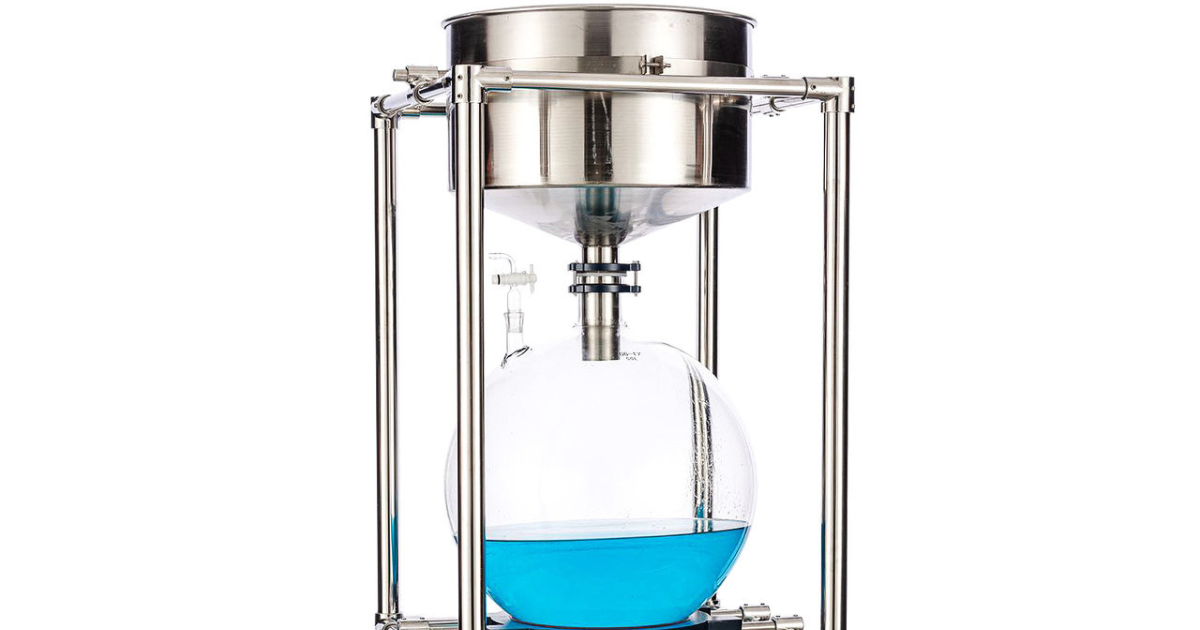
Buchner Funnels for Vacuum Filtration
Posted by USA Lab on Jul 17th 2025
A Buchner funnel is a simple but powerful tool used in vacuum filtration. If you've ever needed to separate a solid from a liquid quickly and cleanly, this funnel comes in handy. It uses suction to pull liquid through a filter, which speeds things up and gives you a cleaner result than standard gravity filtration.
How It’s Different From Other Filtration Tools
The big difference is vacuum power. Standard filtration uses gravity and takes longer. A Buchner funnel uses suction to speed things up and give you a drier solid at the end. It’s especially helpful for:
- Filtering crystals after a reaction
- Removing solids from slurries
- Getting faster results in busy lab workflows
Compared to other filtration apparatus (like simple funnels with folded paper or gravity setups), Buchner funnels are faster, cleaner, and more reliable, especially when dealing with fine particles or larger volumes.
How a Buchner Funnel Works in Vacuum Filtration
Vacuum filtration with a Buchner funnel is all about speed and precision. It uses vacuum pressure to do the heavy lifting.
To understand how it works, let’s look at the key parts of the setup:
- Funnel: It’s wide and flat with straight sides. The bottom has small holes (called a filter plate) where the liquid passes through.
- Filter paper: You lay this on the filter plate to catch solids. Make sure it’s the right size so it fits snugly and doesn't curl up at the edges.
- Buchner flask: This is the thick-walled container (also called a vacuum or filter flask) the funnel sits on. It has a side arm where you attach the vacuum hose.
When everything is set up and you turn on the vacuum, the pressure difference pulls liquid through the paper, leaving solids behind.
Here’s how that process works:
- You start with your setup. Buchner funnel on top, filter paper inside, and the funnel seated tightly on a vacuum (or Buchner) flask.
- You attach a vacuum source. Usually a vacuum pump or water aspirator connects to the flask’s sidearm.
- Turn on the suction. This creates a pressure difference between the top of the funnel and the inside of the flask.
- Pour in the mixture. As soon as the liquid hits the filter paper, the vacuum pulls it through. Solids stay behind, forming a cake on the paper.
Why Vacuum Pressure Matters
The key to making this system work is vacuum pressure. Instead of relying on gravity, you’re actively pulling liquid through the filter. That means:
- Faster filtration: Suction moves liquid through the filter quickly. No slow dripping or clogging.
- Cleaner separation: Solids stay firmly on the filter paper, and you get a clear liquid below.
- Minimal residue: The vacuum helps pull out nearly all the liquid, leaving a dry solid that’s easier to handle or weigh.
Whether purifying a compound or prepping for the next reaction step, a Buchner funnel helps streamline the process.
Common Applications in the Lab

You’ll find Buchner funnels in use anywhere solid-liquid separation is needed. Their speed, simplicity, and reliability make them essential across chemistry labs, classrooms, and commercial facilities.
Here are some places and processes where a Buchner funnel shines:
- Chemical synthesis: After a reaction, you often need to isolate a solid product from a liquid solution. A Buchner funnel makes it quick to filter out crystals or precipitates so you can dry and analyze the result.
- Crystallization work: When growing or purifying crystals, vacuum filtration helps you collect them efficiently without waiting hours for gravity to do the job.
- Botanical extraction: In commercial labs (especially those working with plant extracts), you’ll use a Buchner funnel to remove fine plant matter or waxes from tinctures and concentrates.
Buchner funnels scale easily, whether you’re working with grams or liters, making them useful in almost any setting.
- Research labs use Buchner funnels for everything from material science to pharmaceuticals, often in small-batch or experimental processes.
- Teaching labs rely on them to help students learn core techniques like recrystallization and filtration.
- Commercial production facilities use large-scale versions to speed up workflows and increase throughput in processes that involve powders, extracts, or resins.
Choosing the Right Buchner Funnel for Your Needs
Choosing the Buchner funnel depends on what you're filtering, how often you use it, and what setup you’re running. Here’s how to narrow it down.
Size
Pick a funnel diameter that matches the volume you typically filter.
- For small batches or educational use, a 70–90 mm funnel works well.
- Larger volumes call for 150 mm or more.
Don’t forget to size your filter paper to match.
Materials
- Ceramic: Sturdy and resistant to chemicals. It’s heavier and more fragile, but great for repeated lab use.
- Plastic: Lightweight and budget-friendly. A good pick for teaching labs or when you need something less breakable.
- Glass: Easy to clean and lets you see what’s happening. Just handle it carefully. It’s breakable like ceramic.
You can match the material to the job. For example, ceramic works well for hot filtrations, while plastic is fine for basic room-temperature setups.
Compatibility
Make sure your funnel fits snugly on your vacuum flask. Use a rubber adapter if needed, and confirm the funnel size matches your current filtration system.
Make Every Filtration Count
A well-set-up Buchner funnel can make all the difference in your filtration workflow. When everything fits right and the vacuum holds strong, you get faster results, cleaner separations, and fewer headaches.
Explore Buchner Funnels at USA Lab and get the tools you need to work clean, fast, and with confidence.
